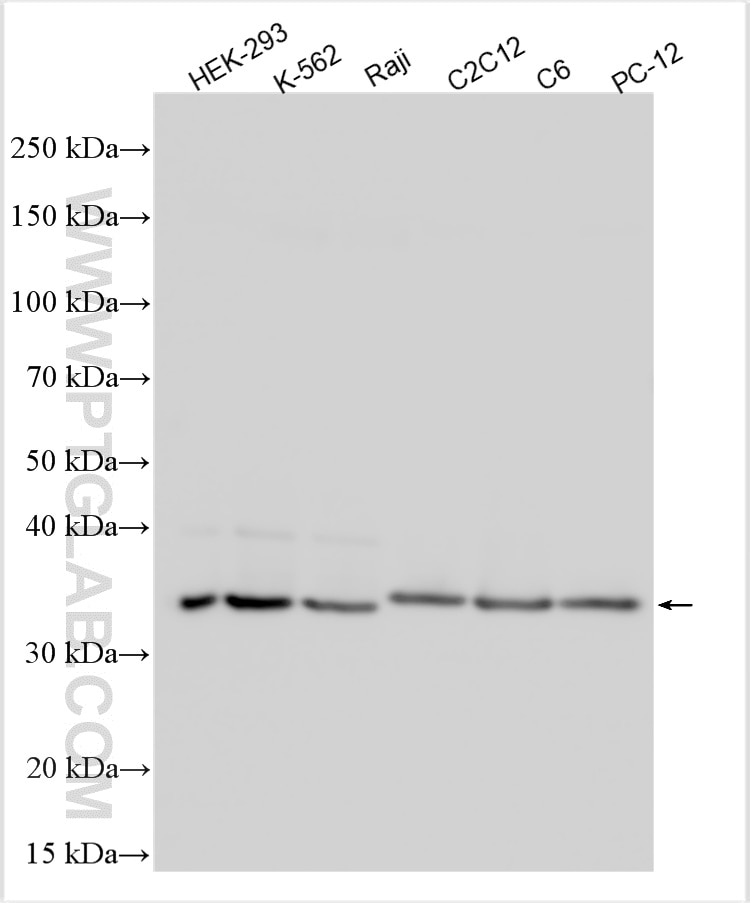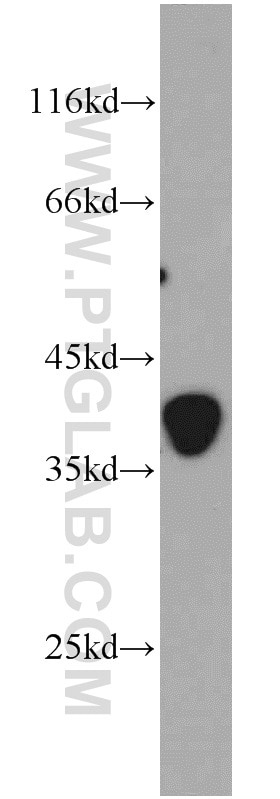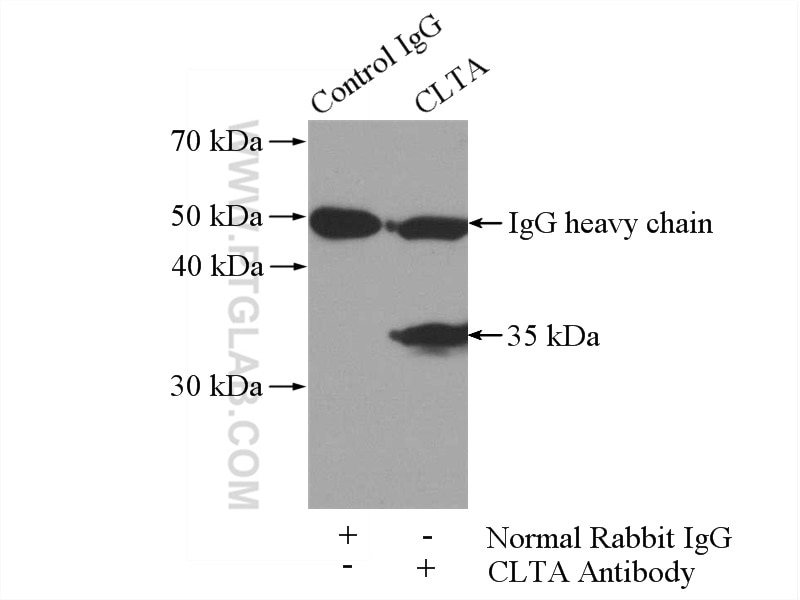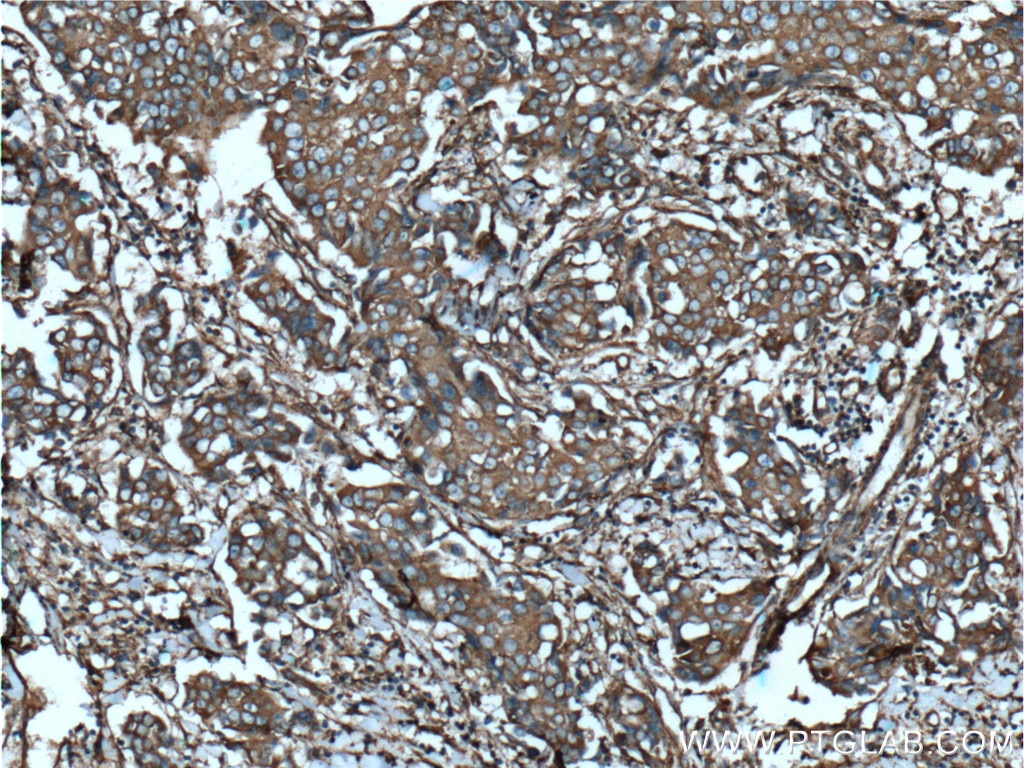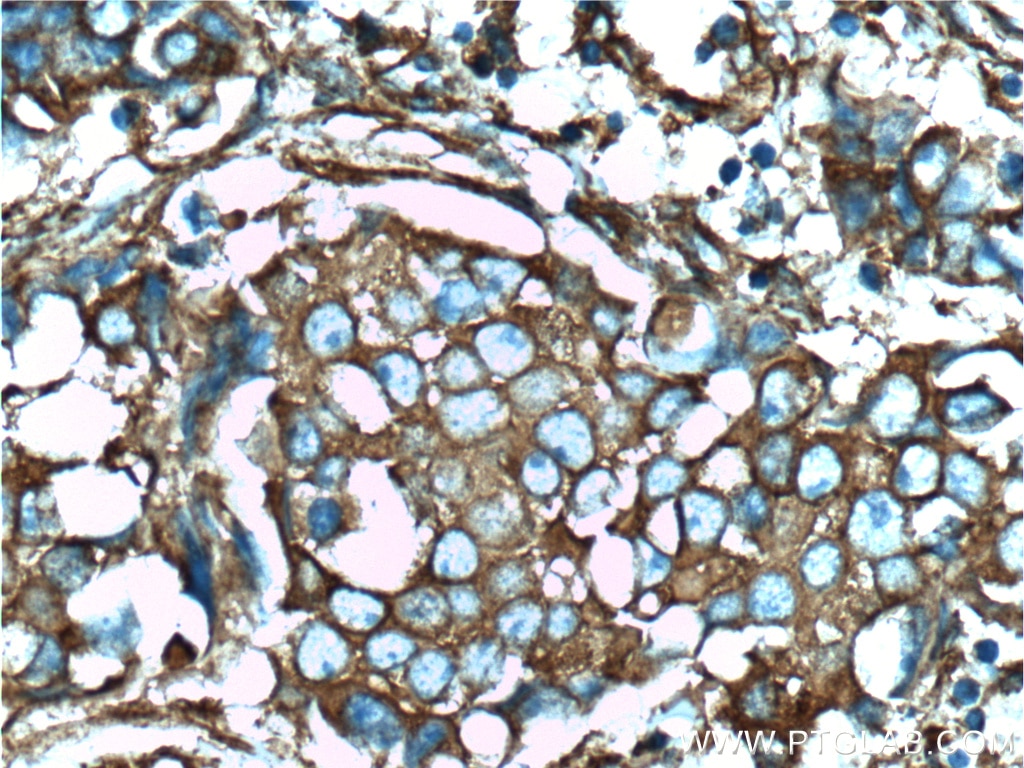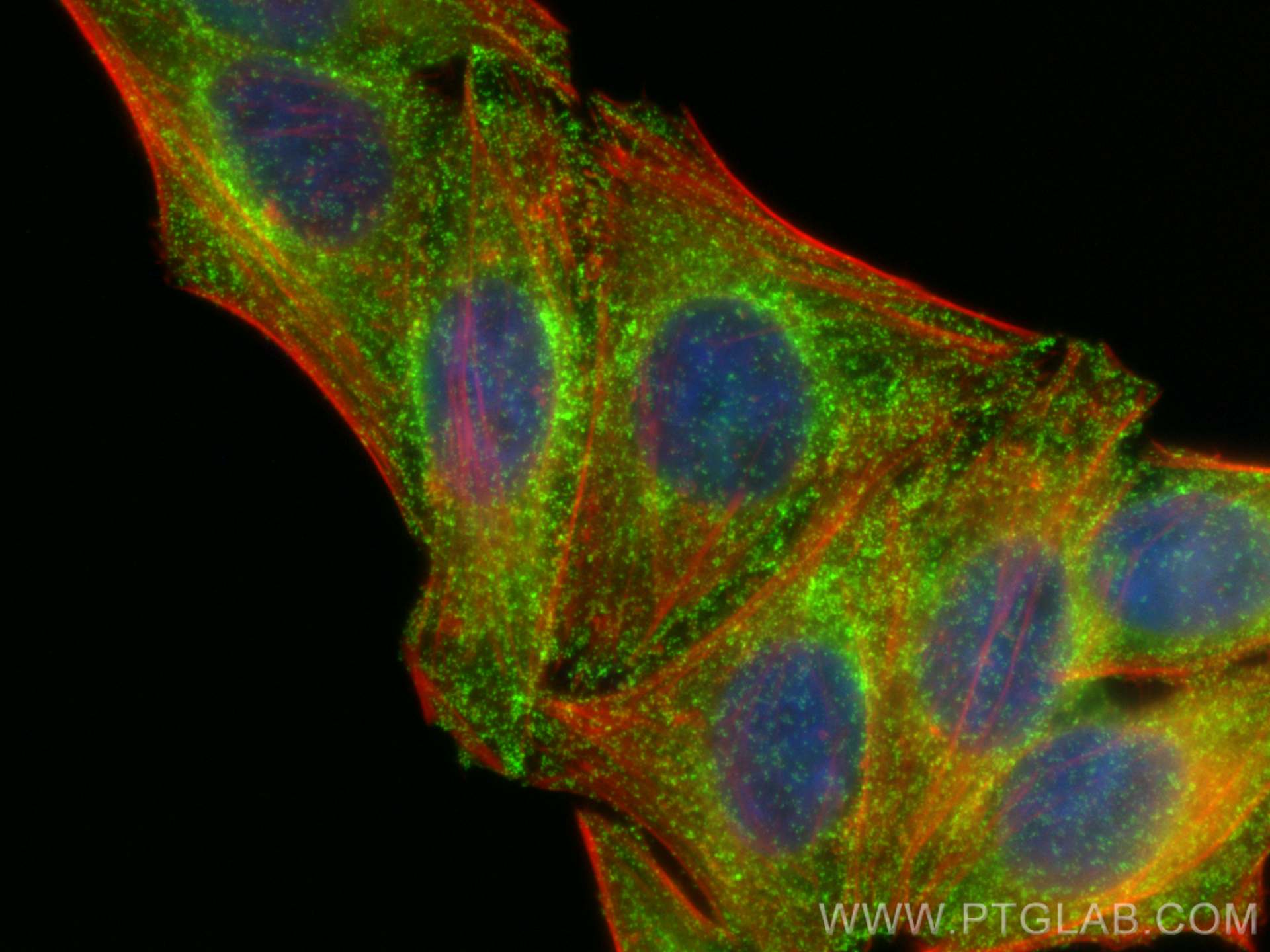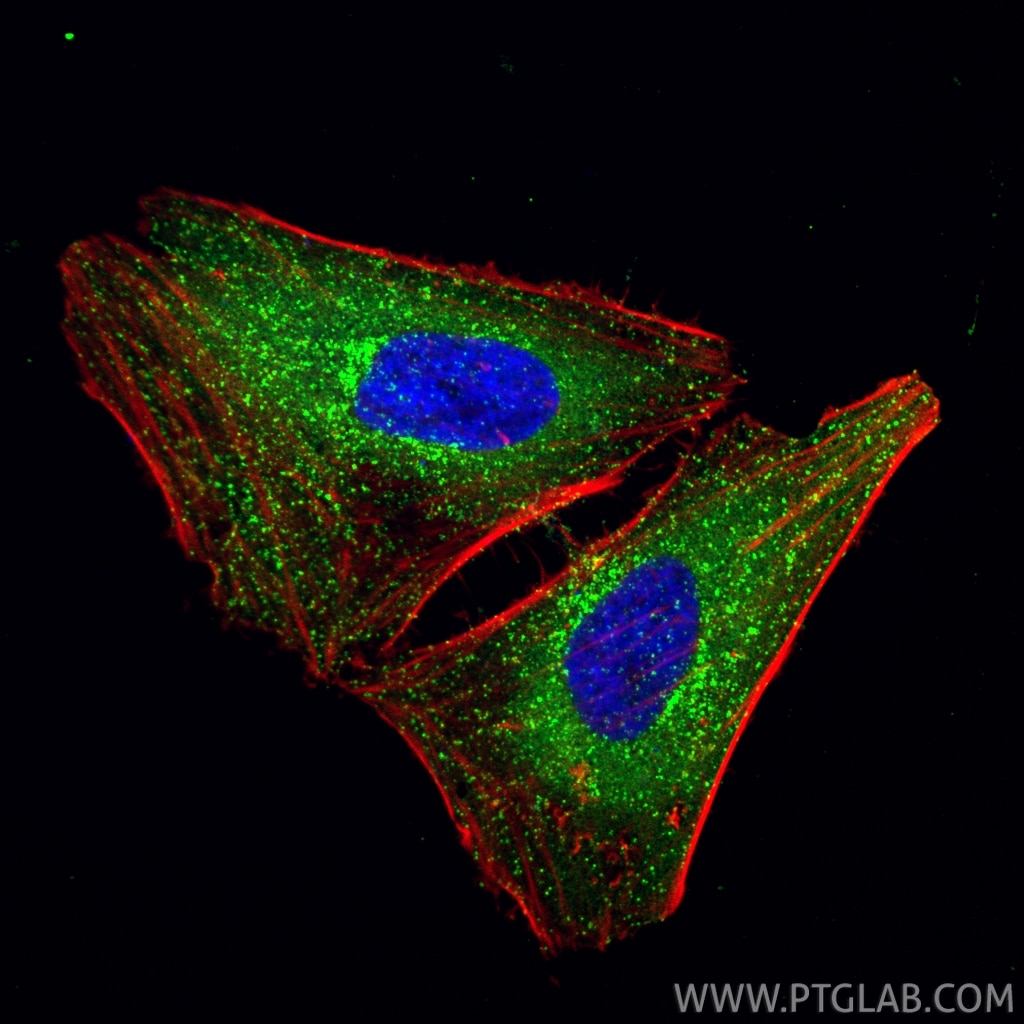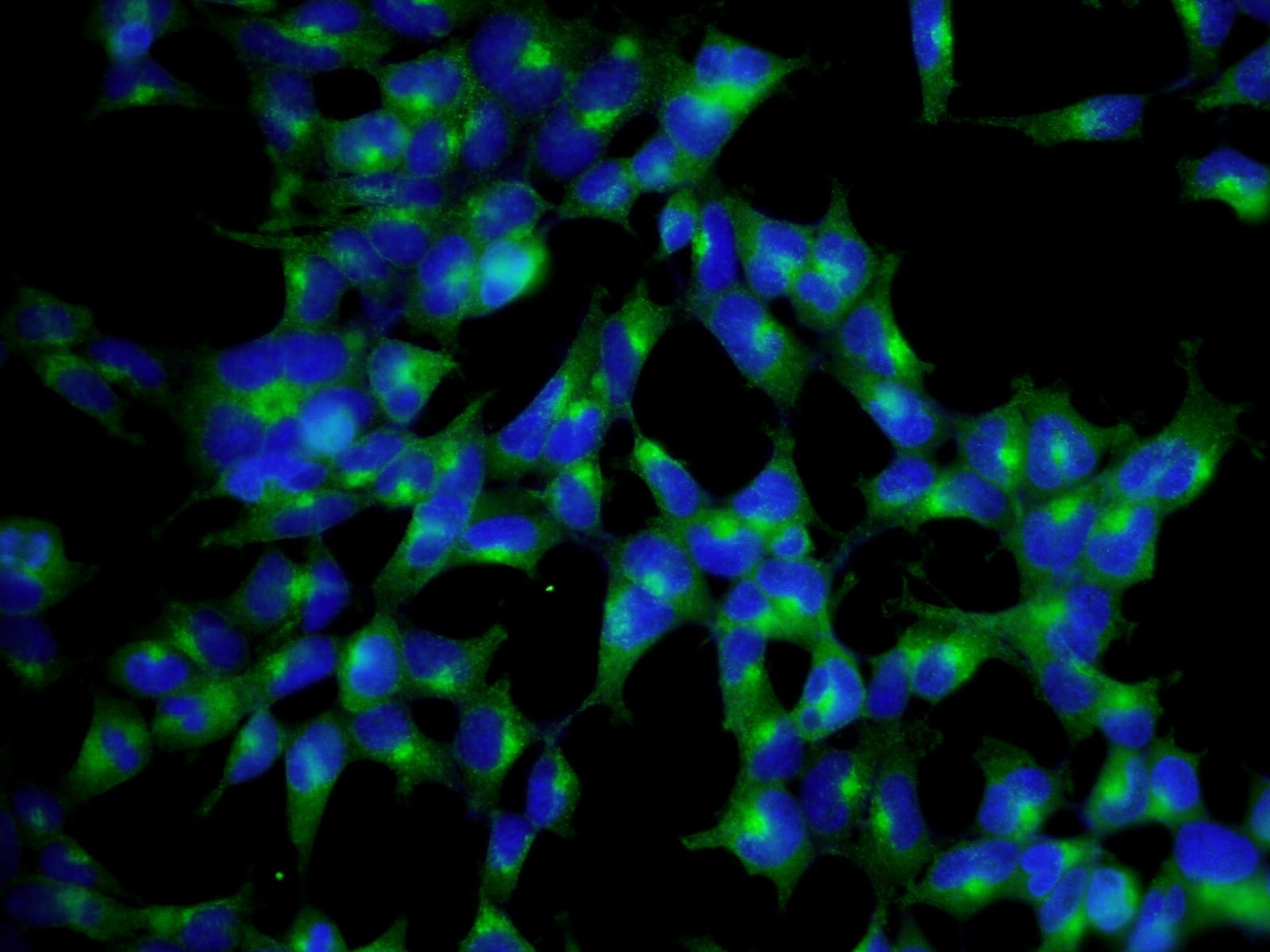Validation Data Gallery
Tested Applications
| Positive WB detected in | HEK-293 cells, mouse brain tissue, K-562 cells, Raji cells, C2C12 cells, C6 cells, PC-12 cells |
| Positive IP detected in | mouse brain tissue |
| Positive IHC detected in | human breast cancer tissue Note: suggested antigen retrieval with TE buffer pH 9.0; (*) Alternatively, antigen retrieval may be performed with citrate buffer pH 6.0 |
| Positive IF/ICC detected in | HeLa cells, HEK-293 cells, HepG2 cells |
Recommended dilution
| Application | Dilution |
|---|---|
| Western Blot (WB) | WB : 1:5000-1:50000 |
| Immunoprecipitation (IP) | IP : 0.5-4.0 ug for 1.0-3.0 mg of total protein lysate |
| Immunohistochemistry (IHC) | IHC : 1:50-1:500 |
| Immunofluorescence (IF)/ICC | IF/ICC : 1:500-1:2000 |
| It is recommended that this reagent should be titrated in each testing system to obtain optimal results. | |
| Sample-dependent, Check data in validation data gallery. | |
Published Applications
| KD/KO | See 1 publications below |
| WB | See 9 publications below |
| IHC | See 1 publications below |
| IF | See 12 publications below |
| IP | See 1 publications below |
Product Information
10852-1-AP targets CLTA in WB, IHC, IF/ICC, IP, ELISA applications and shows reactivity with human, mouse, rat samples.
| Tested Reactivity | human, mouse, rat |
| Cited Reactivity | human, mouse, rat, canine, monkey |
| Host / Isotype | Rabbit / IgG |
| Class | Polyclonal |
| Type | Antibody |
| Immunogen |
CatNo: Ag1299 Product name: Recombinant human CLTA protein Source: e coli.-derived, PGEX-4T Tag: GST Domain: 1-218 aa of BC019287 Sequence: MAELDPFGAPAGAPGGPALGNGVAGAGEEDPAAAFLAQQESEIAGIENDEAFAILDGGAPGPQPHGEPPGGPDAVDGVMNGEYYQESNGPTDSYAAISQVDRLQSEPESIRKWREEQMERLEALDANSRKQEAEWKEKAIKELEEWYARQDEQLQKTKANNRAAEEAFVNDIDESSPGTEWERVARLCDFNPKSSKQAKDVSRMRSVLISLKQAPLVH 相同性解析による交差性が予測される生物種 |
| Full Name | clathrin, light chain (Lca) |
| Calculated molecular weight | 27 kDa |
| Observed molecular weight | 35-38 kDa |
| GenBank accession number | BC019287 |
| Gene Symbol | CLTA |
| Gene ID (NCBI) | 1211 |
| RRID | AB_2083025 |
| Conjugate | Unconjugated |
| Form | |
| Form | Liquid |
| Purification Method | Antigen affinity purification |
| UNIPROT ID | P09496 |
| Storage Buffer | PBS with 0.02% sodium azide and 50% glycerol{{ptg:BufferTemp}}7.3 |
| Storage Conditions | Store at -20°C. Stable for one year after shipment. Aliquoting is unnecessary for -20oC storage. |
Background Information
Clathrin is the major protein of the polyhedral coat of coated pits and vesicles which entrap specific macromolecules during receptor-mediated endocytosis. The clathrin molecule has a triskelion shape. Each clathrin triskelion is composed of three identical heavy chains (180 kDa) and three light chains of two types, LCA (CLTA) and LCB (CLTB) (30-40 kDa). The light chain subunits are thought to regulate the formation or disassembly of clathrin coats. (PMID: 2445759; 8374173; 3563513)
Protocols
| Product Specific Protocols | |
|---|---|
| IF protocol for CLTA antibody 10852-1-AP | Download protocol |
| IHC protocol for CLTA antibody 10852-1-AP | Download protocol |
| IP protocol for CLTA antibody 10852-1-AP | Download protocol |
| WB protocol for CLTA antibody 10852-1-AP | Download protocol |
| Standard Protocols | |
|---|---|
| Click here to view our Standard Protocols |
Publications
| Species | Application | Title |
|---|---|---|
Nat Commun Imaging vesicle formation dynamics supports the flexible model of clathrin-mediated endocytosis. | ||
Proc Natl Acad Sci U S A Clathrin light chains' role in selective endocytosis influences antibody isotype switching.
| ||
J Cell Biol Alternative splicing of clathrin heavy chain contributes to the switch from coated pits to plaques. | ||
Small Persistency of Enlarged Autolysosomes Underscores Nanoparticle-Induced Autophagy in Hepatocytes. | ||
Acta Pharmacol Sin GPR97 deficiency ameliorates renal interstitial fibrosis in mouse hypertensive nephropathy | ||
J Bone Miner Res Adaptor protein complex 2-mediated, clathrin-dependent endocytosis, and related gene activities, are a prominent feature during maturation stage amelogenesis. |

